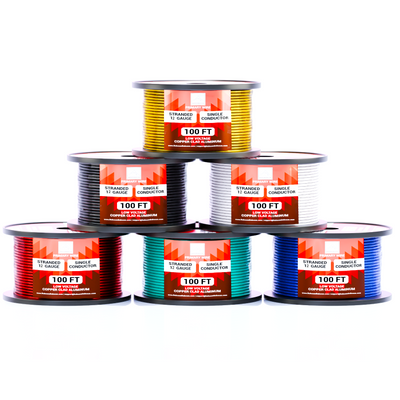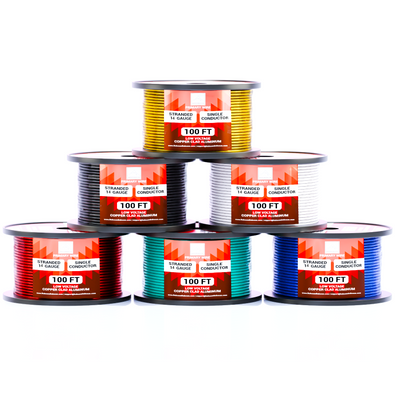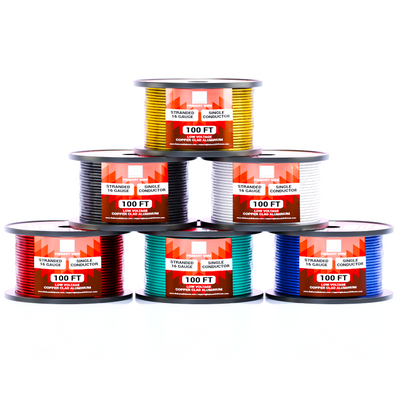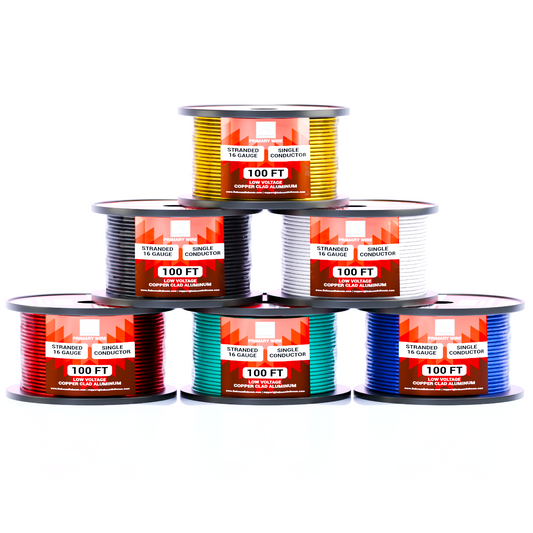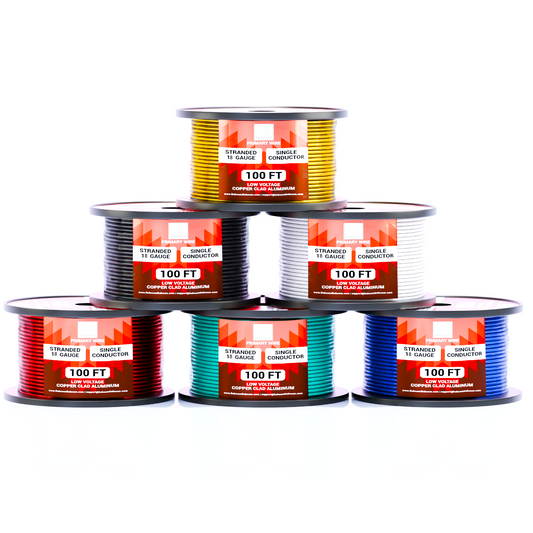
Solar Charging Systems for Trailer Battery Power: Wiring Essentials
Share
Introduction
As more trailer owners embrace off-grid living, road trips, and remote work, the need for reliable power has never been greater. Solar charging systems offer an eco-friendly, consistent, and self-sustaining way to power your trailer’s essential systems—lighting, braking, refrigeration, fans, and more. Whether you’re camping deep in the woods or hauling gear across long distances, a well-installed solar system can make your experience far more efficient and convenient. In this guide, we’ll break down the wiring essentials you need to understand to set up a safe and reliable solar power system in your trailer. Our focus is on clarity, performance, and using smart wiring strategies—especially with cost-effective and trailer-appropriate options.

Understanding the Key Components of a Solar Charging System
An efficient solar charging setup hinges on four core elements: solar panels, a charge controller, a deep-cycle battery, and wiring. Let’s break them down:
- Solar Panels: These capture sunlight and convert it into DC (direct current) electricity. They come in various wattages and sizes, depending on your power needs.
- Charge Controller: This critical component regulates the voltage and current flowing from the solar panels to the battery. It protects the battery from being overcharged, which can shorten battery lifespan or even cause dangerous conditions.
- Battery: Deep-cycle batteries store energy to be used when sunlight isn’t available—at night or on cloudy days.
- Wiring: High-quality, properly sized wiring ensures that electricity flows smoothly and efficiently between each component.
In trailer installations, CCA wiring stands out as a cost-effective and practical choice. While it doesn’t conduct quite as well as pure copper, it’s lighter, more flexible, and significantly more affordable—making it ideal for mobile applications like trailers.

Basic Wiring Layout Explained
Understanding the overall flow of energy is crucial for designing a safe system. Here’s a step-by-step breakdown of a typical wiring layout:
- Solar panels are mounted on the roof or an elevated bracket and connected to the charge controller using a pair of wires—positive and negative—usually through an inline fuse on the positive line.
- From the charge controller, wires run directly to the battery bank, again with an inline fuse on the positive terminal.
- The battery is grounded to the trailer’s frame using a ground wire, completing the circuit.
Wiring should be done with proper polarity and attention to cable gauge. Inline fuses protect your system from short circuits and overloads. While not all wires need fuses, it’s best practice to fuse any cable segment connected directly to a power source—whether it’s the panels or the battery.

Choosing the Right Wire Gauge and Type
Wire gauge is one of the most critical considerations in solar installations. The wrong gauge can result in power loss, heat buildup, and even fire hazards. Here's what to keep in mind:
- Distance Matters: The longer your wire run, the thicker your wire needs to be to handle voltage drop.
- Amperage Ratings: Match the wire size to the amperage of your panels. For example, a 100-watt panel at 12 volts typically outputs around 8 amps.
- Common Gauges: For most trailer setups, 10 GA or 12 GA wire works well. Use 10 GA for longer runs or higher-output panels.
Copper-Clad Aluminum (CCA) wire is a great option here. It offers solid performance at a fraction of the cost of pure copper. While slightly less conductive, it's still capable of delivering the necessary power for most trailer needs, especially when selected in the correct gauge. Need wiring in bulk? Check out our wholesale signup page for affordable options on CCA wire designed specifically for trailer applications.

Mounting and Routing Tips for Solar Panels and Wiring
Once you’ve chosen your components and wiring, installation is next. Here are a few tips for mounting and routing wires effectively:
- Mounting Panels: Install solar panels on flat roof surfaces using corrosion-resistant brackets. Make sure the panels are angled toward the sun if possible, and that they’re secured against wind and vibration.
- Routing Wires: Use waterproof cable entry ports to bring wires into the trailer safely. Keep cable runs as short and direct as possible to minimize energy loss.
- Wire Protection: Use UV-resistant sleeving or conduit for exposed wires. Route wires through holes in the trailer frame or walls using rubber grommets to avoid cutting or chafing.
- Secure Placement: Anchor wires with cable clips or ties every 12–18 inches to prevent sagging or tangling.
These small details go a long way in ensuring system longevity and safety.
Maintenance and Troubleshooting Tips
Even though solar systems are low-maintenance, regular inspections are a must:
- Check for Loose Connections: Heat and vibration can loosen terminals, especially on rough roads.
- Clean Panels: Dirt, dust, and pollen can reduce panel efficiency. Wipe them down with a damp cloth every few weeks.
- Monitor Voltage: Use a multimeter to ensure your panels are producing power and your charge controller is functioning.
- Watch for Corrosion: Inspect wiring ends and battery terminals for signs of corrosion, especially in humid climates.
For help with diagnostics and personalized wiring plans, try using our Expert Software Tool, which generates tailored instructions based on your trailer’s unique configuration.

Conclusion
A solar charging system is a game-changer for trailer owners seeking energy independence and peace of mind. With the right components—solar panels, charge controller, battery, and quality CCA wiring—you can build a reliable system that keeps your electronics powered wherever the road takes you. The key to success lies in proper planning, the right wire gauge, protective measures like fuses and grommets, and regular maintenance.
At Baboom Baboom, we’re passionate about helping people like you set up efficient and affordable trailer wiring solutions. We specialize in Copper-Clad Aluminum wire that’s specifically suited for mobile solar installations. Whether you're a DIY enthusiast or a professional installer, we have the tools and insights to support your project.
Get to know us better on our About Us page, or reach out directly with your questions. Let’s get your trailer powered up and ready for adventure!

